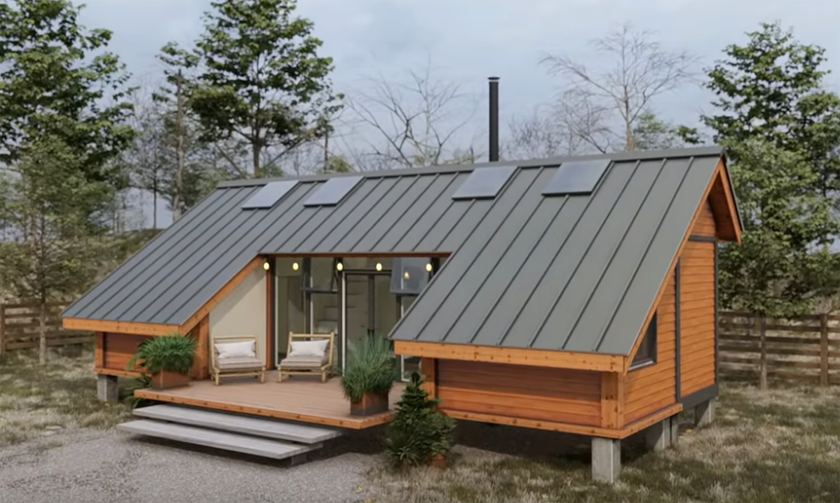The tiny houses movement is an architectural and social movement that advocates for downsizing living spaces, simplifying, and essentially living with less.
According to the 2018 International Residential Code, Appendix Q Tiny Houses, a tiny house is a dwelling unit with a maximum of 400 sq ft of floor area, excluding lofts.
The term tiny house is sometimes used interchangeably with “micro-house”.
In the video below:
In this Cabin House: Living area, dining area, kitchen, bathroom 2, bedrooms 2.
Tiny houses have surged in popularity recently because they are economical and environmentally friendly.

View the entire Tiny House playlist at: Tiny House On Field
Tiny houses are compact living spaces typically ranging from 100 to 600 square feet, though some definitions extend up to 1,200 square feet.
These small dwellings have gained popularity as an alternative to traditional housing, offering a minimalist lifestyle and reduced environmental impact.
While tiny housing primarily represents a return to simpler living, the movement was also regarded as a potential eco-friendly solution to the existing housing industry, as well as a feasible transitional option for individuals experiencing a lack of shelter.
Features and Benefits
Affordability: Tiny homes can be more budget-friendly, with some starting at $92,959 with monthly payments as low as $809.
Sustainability: Many tiny houses are designed to be eco-friendly, incorporating solar power and rainwater collection systems.
Customization: Despite their small size, tiny homes often feature clever storage solutions and multi-functional spaces.
Simplified Living: The tiny house movement promotes downsizing and minimalism, encouraging a less cluttered lifestyle.
Tiny houses continue to attract a diverse range of people, from young couples to retirees, and are increasingly used for both residential and commercial purposes.
As the movement grows, innovations in design and technology are making tiny living more accessible and comfortable for those seeking an alternative to traditional housing.






